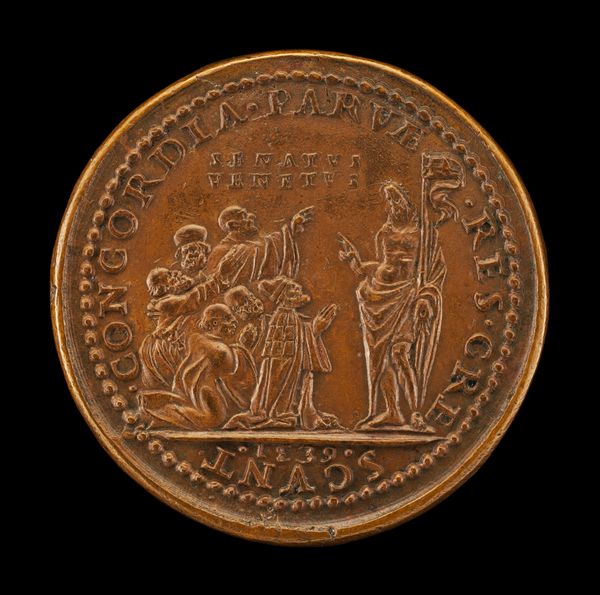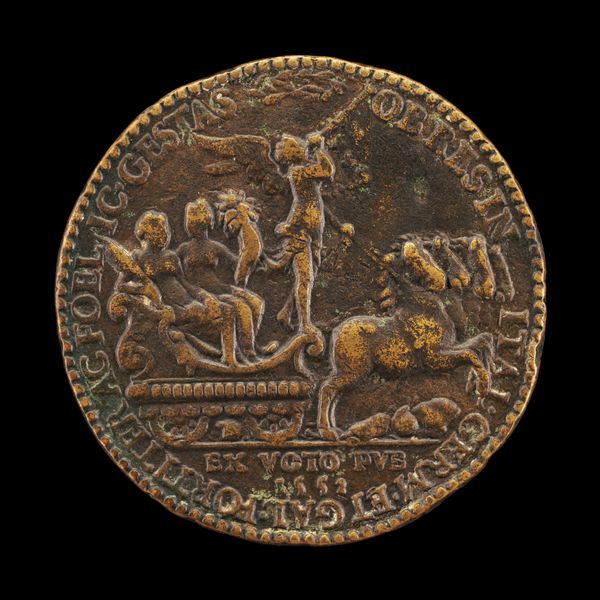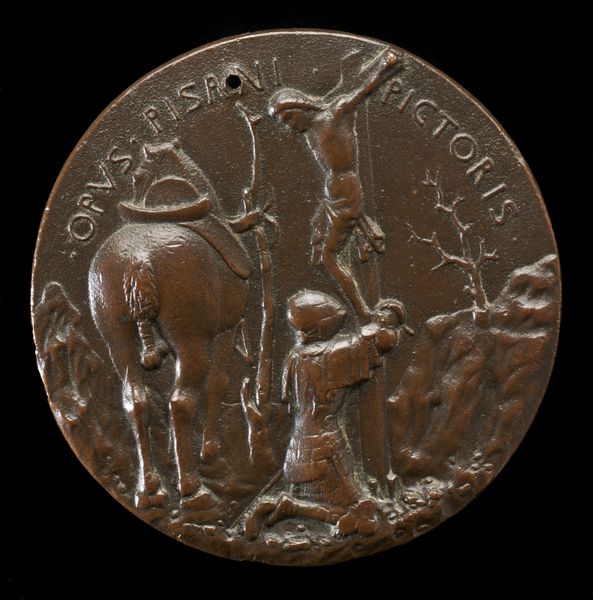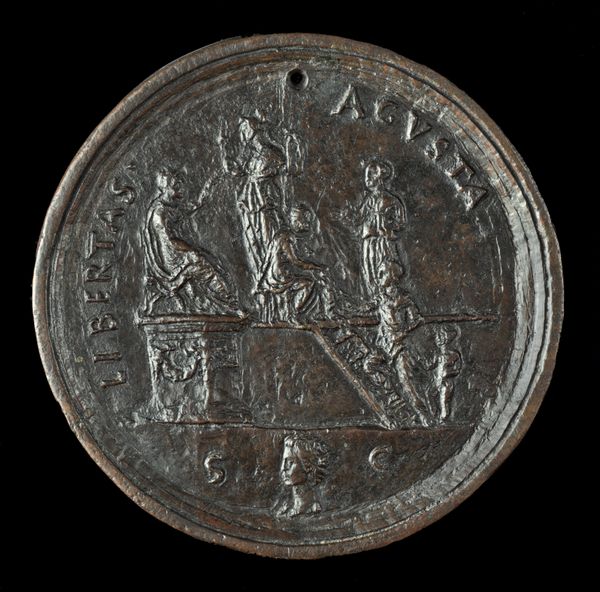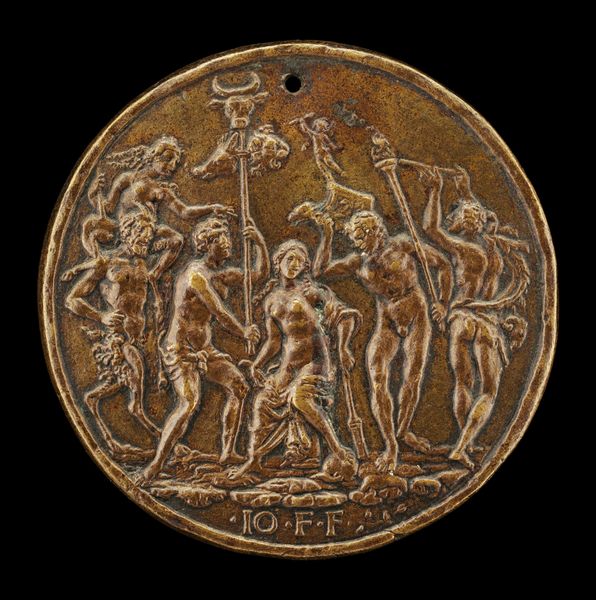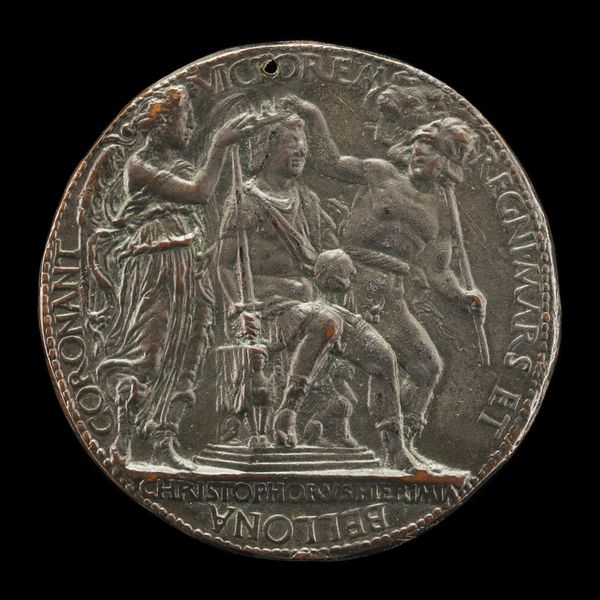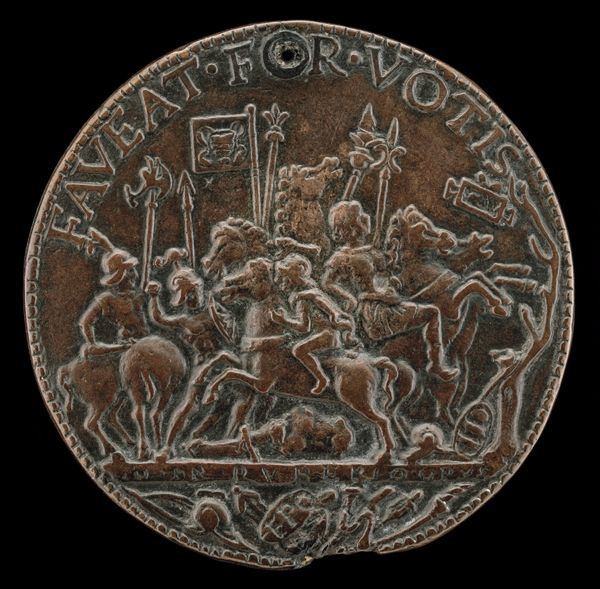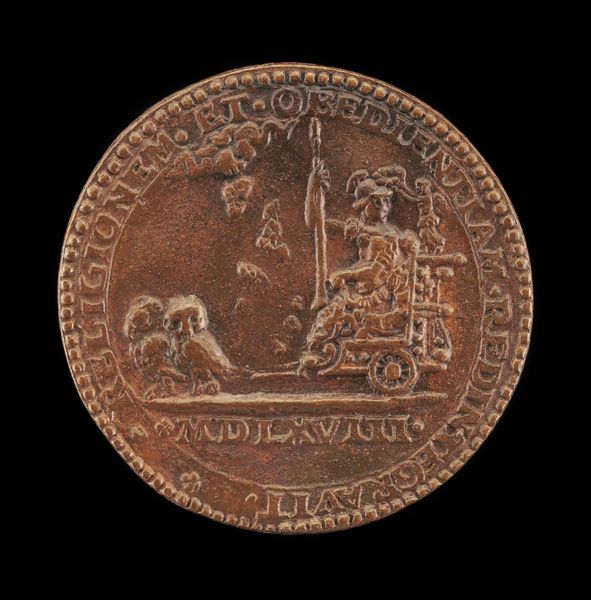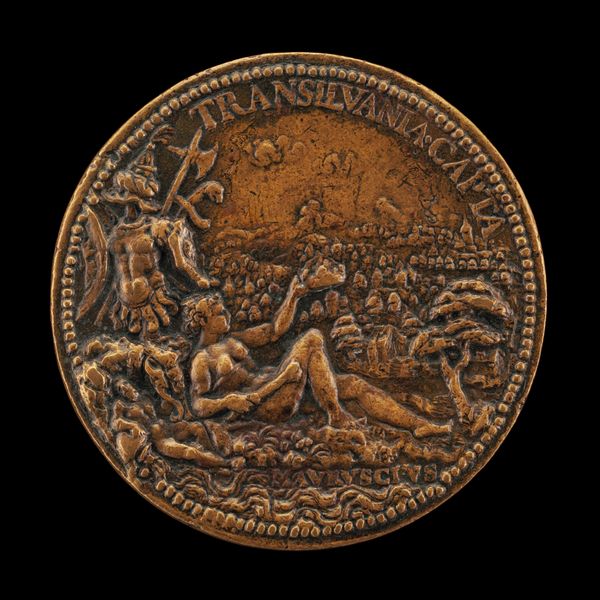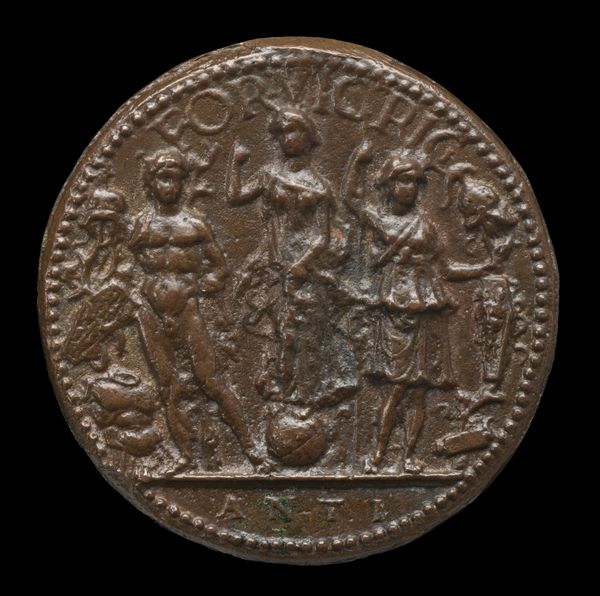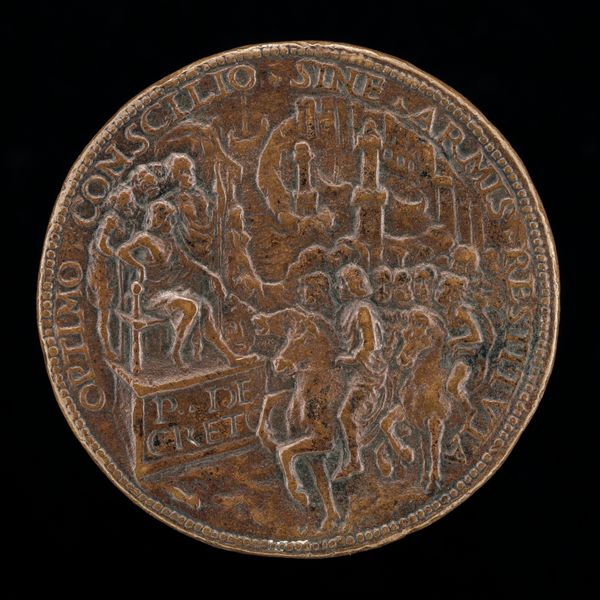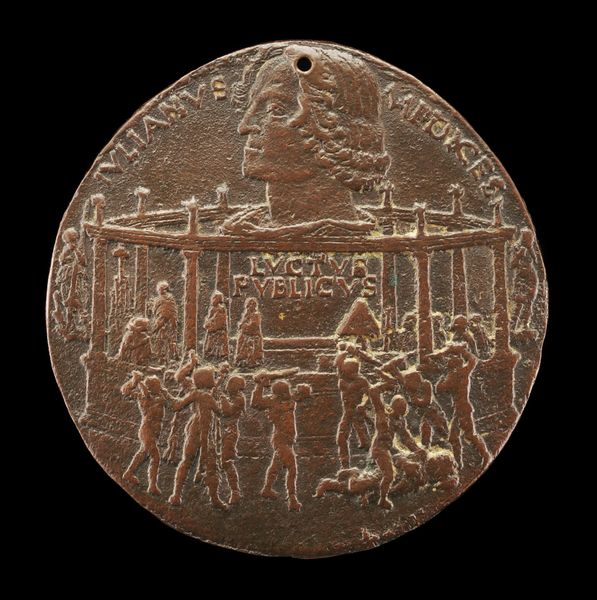![Triumphal Procession [reverse] by Cristoforo di Geremia](/_next/image?url=https%3A%2F%2Fd2w8kbdekdi1gv.cloudfront.net%2FeyJidWNrZXQiOiAiYXJ0ZXJhLWltYWdlcy1idWNrZXQiLCAia2V5IjogImFydHdvcmtzL2YzOTM4ODRkLTdhYzMtNGJlNC04MDZjLTQ4MTljNGJmMWVlYi9mMzkzODg0ZC03YWMzLTRiZTQtODA2Yy00ODE5YzRiZjFlZWJfZnVsbC5qcGciLCAiZWRpdHMiOiB7InJlc2l6ZSI6IHsid2lkdGgiOiAxOTIwLCAiaGVpZ2h0IjogMTkyMCwgImZpdCI6ICJpbnNpZGUifX19&w=3840&q=75)
metal, relief, bronze, sculpture
#
medal
#
metal
#
stone
#
sculpture
#
relief
#
bronze
#
figuration
#
sculpting
#
sculpture
#
history-painting
#
italian-renaissance
Dimensions: overall (diameter): 3.94 cm (1 9/16 in.) gross weight: 36.9 gr (0.081 lb.) axis: 12:00
Copyright: National Gallery of Art: CC0 1.0
Curator: Here we have a bronze medal titled "Triumphal Procession [reverse]", created around 1440 by Cristoforo di Geremia. It's a striking example of Italian Renaissance artistry, offering a glimpse into the values and aspirations of that era. Editor: Oh, wow. First thought? It feels like a freeze-frame from a boisterous party, caught mid-revelry. All that jostling energy packed into such a small space...almost bursting out of its circular frame. It’s intense! Curator: Precisely. These medals were often commissioned to commemorate individuals or events. Cristoforo di Geremia excelled in portraying dynamism within this format. In "Triumphal Procession," we witness an imagined victory, not just of arms but perhaps of faith. Notice how he employs classical architecture to signal authority and link this event to the grandeur of the Roman Empire. Editor: Yes, there’s a building hovering on the periphery, almost ghostly. But it's the human element, the throng of figures pushing forward that I find mesmerizing. Is it my imagination, or do some of them look… strained? Are we sure this is a celebration and not some kind of... forced march? Curator: That tension is key to understanding Renaissance humanism, a questioning of authority and traditional narratives. Medals such as this offer more than simple flattery. They're designed to engage the viewer in a dialogue about power, virtue, and civic duty. In this one the inscription above and below further suggests, a complex interplay of church and governance at the time. Editor: So, like a political cartoon rendered in bronze? I’m beginning to imagine the conversations this medal must have sparked amongst those holding it back in the 15th century...it really is an object alive with arguments and tensions. You know, holding this, it almost feels dangerous. Curator: Indeed. And remember these medals circulated in diplomatic and intellectual circles, where such visual arguments played a vital role in shaping perceptions and influencing opinion. That tension, as you rightly observed, is precisely where its power lies. Editor: A frozen, fiery debate in metal...fascinating! I see more in it now, something almost claustrophobic, beyond the initial fanfare and celebration. It really challenges what triumph means, doesn’t it? Curator: It does. Examining the cultural narratives and visualizing their physical context is always so incredibly helpful.
Comments
No comments
Be the first to comment and join the conversation on the ultimate creative platform.
